#ctr manipulation tool
Explore tagged Tumblr posts
Text
Decoding the Enigma of Click-Through Rates (CTR)
In the labyrinth of online success, Click-Through Rates (CTR) stand tall as the sentinel of triumph. Understanding the nuances of CTR unveils the gateway to unparalleled digital achievement. Let's embark on a journey to unravel its significance, delve into its intricate dynamics, and wield the metrics that measure its prowess.
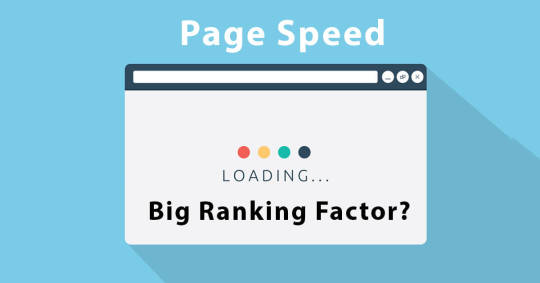
Unveiling the Significance of CTR: The Gateway to Online Success
The Role of CTR in Driving Website Traffic and Conversions
The heartbeat of any online campaign resides in its ability to beckon users towards engagement. CTR, the compass guiding this journey, determines the resonance of your content with the audience. A high CTR translates to increased traffic, heightened visibility, and the coveted conversions. It's the handshake between your content and the audience the initial interaction that sets the stage for a meaningful relationship.
Delving into the Dynamics of CTR: Factors that Influence User Engagement
The Factors Contributing to High CTR
The alchemy behind a compelling CTR involves an amalgamation of multifaceted elements. Compelling content, visually arresting imagery, and strategic placement are the bedrock of enticing click-throughs. Crafting content that resonates with your audience's desires, evokes emotions, and offers value becomes the cornerstone of a high CTR. Visuals, acting as the silent persuaders, capture attention and guide users towards that coveted click.
Measuring CTR Effectively: Key Metrics for Gauging Campaign Performance
Essential Metrics for Measuring CTR
Navigating the labyrinth of CTR requires a compass calibrated with precision. Metrics such as impressions, clicks, and conversion rates paint an intricate tapestry of user interaction. Impressions set the stage, clicks denote engagement, and conversion rates depict the pinnacle of success�an engaged audience turned into loyal patrons. These metrics are the barometer of campaign effectiveness, guiding optimization strategies towards perfection.
Moving forward, the arsenal of CTR manipulation tools awaits in Section 2, unveiling the methodologies to harness and master the art of optimizing CTR for unparalleled online success.
Boost CTR Now!
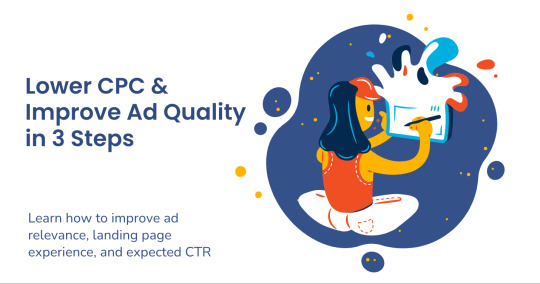
Unveiling the Arsenal of CTR Manipulation Tools
In the ever-evolving landscape of digital prowess, mastering Click-Through Rate (CTR) manipulation is an art form that demands precision tools. Section 2 uncovers the arsenal of methodologies poised to optimize CTR, ranging from the empirical science of A/B testing to the prophetic insights of predictive analytics.
Harnessing the Power of A/B Testing: Unveiling the Optimal Campaign Elements
Decoding A/B Testing and its Application
A/B testing, the pioneer of optimization, thrives on the essence of comparison. This methodology involves presenting variations of a webpage, email, or advertisement to different segments of your audience. By meticulously analyzing user responses to these variants, the optimal elements that drive a higher CTR emerge from the crucible of comparison. From tweaking button colors to refining content, A/B testing fine-tunes campaign elements towards the zenith of engagement.
Leveraging Heatmaps: Visualizing User Interaction and Optimizing Click-Through Paths
Unveiling the Insights of Heatmaps
Heatmaps serve as the voyeur of user interaction, painting a vivid picture of behavior across your digital landscape. These visual representations pinpoint areas of user focus, click hotspots, and the meandering paths of engagement. By dissecting these visual cues, optimization opportunities surface, allowing for strategic alterations to amplify the click-through journey.
Embracing Predictive Analytics: Forecasting User Behavior and Maximizing CTR
The Prophetic Insights of Predictive Analytics
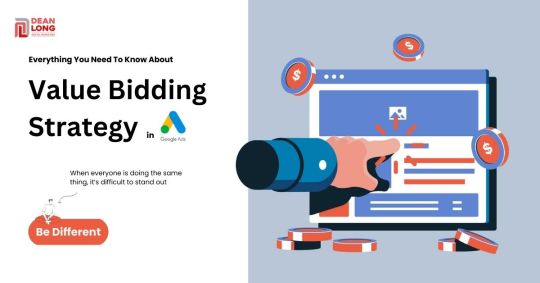
The crystal ball of marketing, predictive analytics, casts a glimpse into the future of user behavior. By analyzing past data patterns and user interactions, predictive analytics anticipates future actions, preferences, and trends. This foresight empowers marketers to sculpt campaigns aligned with user inclinations, ensuring maximum CTR through tailored and prescient strategies.
The path ahead, meticulously paved with the art of CTR optimization strategies, beckons in Section 3. Here, practical methodologies await, guiding the crafting of captivating headlines, compelling calls to action, and seamless landing pages to further elevate CTR performance.
Mastering the Art of CTR Optimization: Practical Strategies
In the grand tapestry of Click-Through Rate (CTR) optimization, practicality becomes the brushstroke that paints success. Section 3 unveils the brushstrokes�crafting captivating headlines, wielding compelling calls to action, and sculpting seamless landing pages�that compose the masterpiece of enhanced CTR.
Crafting Captivating Headlines: The Art of Grabbing User Attention
Guidelines for Attention-Grabbing Headlines
Headlines, the first impression in the symphony of content, possess the power to beckon or repel. Crafting a headline that sings�intriguing, concise, and promise-laden�is the crux of capturing wandering attention. It�s the invitation to an engaging conversation, tantalizing users to delve deeper into the content. Evoking curiosity, urgency, or offering solutions becomes the cornerstone of a high CTR headline.
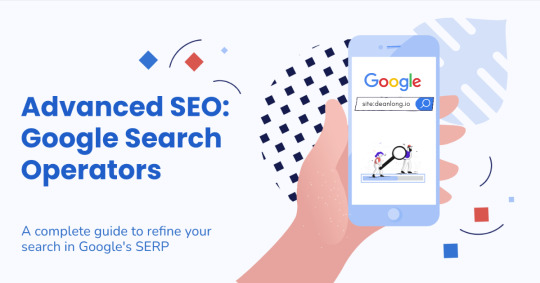
Utilizing Compelling Calls to Action: Guiding Users Towards Desired Actions
The Significance of Clear Calls to Action
Calls to action (CTAs), the silent conductors of user interaction, dictate the desired dance steps. Clarity and directness are the linchpins of an effective CTA, guiding users towards desired actions�be it subscribing, purchasing, or exploring further. CTAs, strategically positioned and linguistically crafted, pave the path towards the desired conversion, enhancing the CTR symphony.
Optimizing Landing Pages: Ensuring a Seamless User Experience
Significance of Seamless Landing Pages
Landing pages, the portal between click and conversion, demand a choreography that leads users effortlessly towards their destination. Logical flow, minimal distractions, and alignment with the promise of the preceding click become the pillars of an optimized landing page. Ensuring an experience mirroring user expectations amplifies engagement, elevating CTR performance.
The ethical compass guiding CTR manipulation discussions unfurls in Section 4, navigating the fine line between enhancing CTR and upholding user trust. Here, ethical considerations and the significance of transparency in optimization practices await exploration, segueing seamlessly from practical strategies towards ethical implementations.
Navigating the Ethical Landscape of CTR Manipulation
As the digital realm burgeons with strategies to enhance Click-Through Rates (CTR), the moral compass guiding these endeavors becomes imperative. Section 4 delineates the ethical considerations essential to balance the quest for heightened CTR without compromising user trust.
Striking a Balance: Enhancing CTR without Compromising User Trust
The Delicate Equilibrium
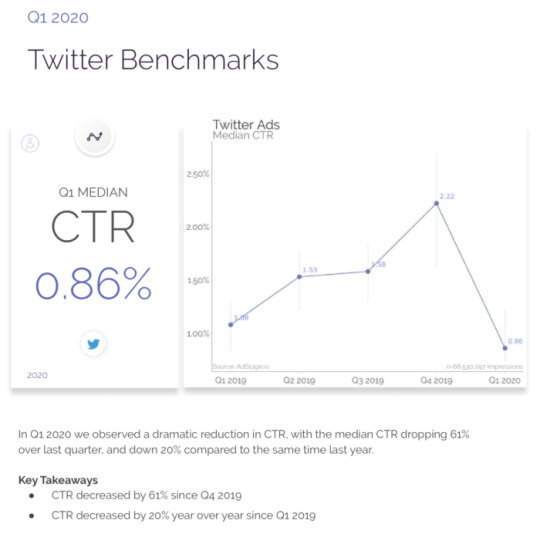
The pursuit of an escalated CTR should harmonize with the cardinal principle of user trust. Balancing these twin objectives necessitates an approach rooted in integrity and transparency. A high CTR forged through ethical means preserves the sanctity of user relationships, fostering loyalty and long-term engagement.
Avoiding Black Hat Techniques: Ethical Considerations for CTR Optimization
The Perils of Black Hat Practices
The shadows of the digital realm harbor deceptive tactics that promise instant CTR gratification but at the cost of user trust. Clickbait, misleading content, and manipulative strategies breed distrust, eroding the foundation of a sustainable online presence. Upholding ethical standards is paramount, ensuring CTR optimization without resorting to deceitful practices.
Embracing Transparency: Building Trust with Users through Open Communication
The Pillar of Transparent Practices
Transparency becomes the cornerstone of ethical CTR optimization. Openly communicating data collection practices, intentions behind campaigns, and the use of user information fosters a relationship based on mutual understanding and respect. Users empowered with information willingly engage, fostering an environment of trust and credibility.
The trajectory forward toward the impending Section 5 heralds the evolution of CTR optimization, exploring the frontiers of AI, real-time data analytics, voice search, and chatbots in redefining the dynamics of user engagement.
Embracing the Future of CTR Manipulation: Trends and Innovations
In the ever-evolving digital landscape, Click-Through Rate (CTR) optimization transcends conventional methodologies, embracing the vanguard of innovation and technology. Section 5 unveils the avant-garde trends poised to redefine the dynamics of user engagement.
Harnessing the Power of Artificial Intelligence (AI) for Personalized CTR Optimization
AI: The Architect of Personalization
Artificial Intelligence emerges as the linchpin in the realm of CTR optimization, wielding the ability to craft personalized strategies based on individual user behavior and preferences. By analyzing vast datasets and deciphering intricate patterns, AI refines campaigns to resonate with each user's unique inclinations, maximizing CTR potential.
Leveraging Real-Time Data Analytics for Dynamic CTR Optimization

The Dynamic Symphony of Real-Time Analytics
Real-time data analytics herald a paradigm shift in CTR optimization, enabling the agility to dynamically adapt strategies based on instantaneous user engagement. The insights gleaned from live interactions empower marketers to fine-tune campaigns swiftly, ensuring alignment with evolving user behaviors, thus amplifying CTR in real time.
Exploring the Potential of Voice Search and Chatbots for Enhanced CTR
Voice and Chatbots: The Pioneers of Conversational Engagement
Voice search and chatbots emerge as formidable allies in driving enhanced CTR. The conversational interface they offer fosters seamless user interaction while unlocking novel pathways for engagement. Optimizing content to cater to voice search queries and deploying chatbots adept at guiding users through intuitive conversations become pivotal in augmenting CTR.
In conclusion, the saga of CTR optimization is a tapestry woven from understanding its significance, leveraging diverse tools, employing practical strategies, upholding ethical standards, and embracing futuristic innovations. From the quintessential role of compelling content to the dawn of AI-driven personalization, each segment contributes to the symphony orchestrating digital success.

#click-through-rate#ctr#website-traffic#traffic#click through rate#ctr rate#ctr booster#ctr manipulation#ctr manipulation tool
1 note
·
View note
Text
What Are the Risks of CTR Manipulation? Citation Builder Pro Discusses the Drawbacks

As businesses and marketers continue to seek ways to boost their online visibility and rankings, click-through rate manipulation has become a popular tactic. By artificially inflating the CTR of a webpage, businesses can signal to search engines like Google that their content is highly relevant to users, potentially leading to higher rankings. While this strategy can provide quick gains, it’s important to consider the potential risks involved. In this blog post, we’ll explore the drawbacks of CTR manipulation and why it’s essential to approach this technique with caution.
Understanding the Risks of CTR Manipulation
Click-through rate manipulation involves simulating user clicks on a website’s search engine listing to improve its perceived relevance. The idea is to increase the number of clicks a page receives from search engine results pages (SERPs), which can signal to search engines that the page is of higher value. While this can temporarily boost a page’s visibility and rankings, there are several risks associated with using this strategy.
1. Potential Google Penalties
Google’s algorithms are designed to detect unnatural activity, and CTR manipulation falls into this category. While simulating clicks may seem like a harmless tactic, Google’s systems are becoming increasingly sophisticated at spotting fraudulent behavior. If Google identifies that a website is artificially inflating its CTR without corresponding genuine user engagement, it may penalize the website by lowering its rankings or even removing it from search results altogether. This risk makes CTR manipulation a dangerous strategy if not used responsibly and ethically.
2. Decreased User Engagement Metrics
CTR manipulation can create the illusion that a page is highly relevant, but if the content doesn’t meet the user’s expectations once they click, the result can be a high bounce rate and low time on site. Google closely monitors engagement metrics like these, and if users quickly leave the page after clicking, it may send a negative signal to the algorithm. This can lead to a drop in rankings over time, potentially undoing any benefits gained from the initial CTR boost. The key to sustained SEO success is user satisfaction, not just click volume.
3. Short-Term Gains, Long-Term Consequences
While click-through rate manipulation can lead to short-term improvements in rankings, it does not provide the long-term value that comes from organic SEO efforts. Without solid content, authoritative backlinks, and other essential SEO strategies, relying on CTR manipulation alone can only take a website so far. Once the effects of CTR manipulation wear off, businesses may find themselves struggling to maintain their rankings. For small businesses, this can be particularly frustrating, especially if they rely on local visibility, such as local citations services in Argentina or local citations management provider services in Belgium, to drive organic traffic.
4. Unethical Practices and Reputation Risks
Using CTR manipulation tools to artificially inflate CTR may be seen as an unethical SEO practice by some in the industry. Businesses that rely heavily on manipulative tactics risk damaging their reputation and losing the trust of both customers and search engines. In today’s digital age, businesses need to focus on building credibility through authentic methods such as creating high-quality content, engaging with customers, and obtaining legitimate backlinks.
5. Inaccurate Analytics and Misleading Data
Relying on CTR manipulation tools can skew a website’s analytics data, making it difficult to assess real user behavior. If the CTR is artificially inflated, it may mask underlying issues with the website, such as poor content quality or an ineffective user experience. Businesses may find it challenging to make data-driven decisions when their analytics are not truly reflective of organic user interactions.
Closure
While click-through rate manipulation can provide a short-term boost in rankings, it is fraught with risks that can outweigh the benefits. Google’s increasing ability to detect manipulative tactics, combined with the potential for penalties and decreased user engagement, makes CTR manipulation a high-risk strategy. At Citation Builder Pro, we encourage businesses to focus on sustainable, ethical SEO practices that emphasize long-term growth. Combining CTR manipulation with other solid SEO strategies, such as high-quality content creation, backlinks, and local SEO efforts, can help businesses achieve lasting success without falling into the trap of short-term tactics that may harm their online presence in the long run.
Contact Us
Citation Builder Pro
STPI, T 16 - B, MIDC, opp. Garware Stadium, MIDC Industrial Area, Chilkalthana, Chhatrapati Sambhajinagar (Aurangabad), 431210, India
+91 9822298988
https://www.citationbuilderpro.com/
Find Us On Social Media
Facebook
Twitter
LinkedIn
Youtube
Instagram

#ctr manipulation#ctr manipulation software#ctr manipulation tools#click through rate manipulation#what is ctr manipulation
0 notes
Text
Are Your Click-Through Rates Dead? The Alarming Rise of Banner Blindness and What You Can Do About It
In the ever-evolving landscape of online marketing, Click-Through Rates (CTR) stand as pillars defining success. However, recent trends have unveiled a crisis: the gradual decline of CTRs across various industries. This article uncovers the lurking menace of Banner Blindness and illuminates strategies to combat this alarming phenomenon.
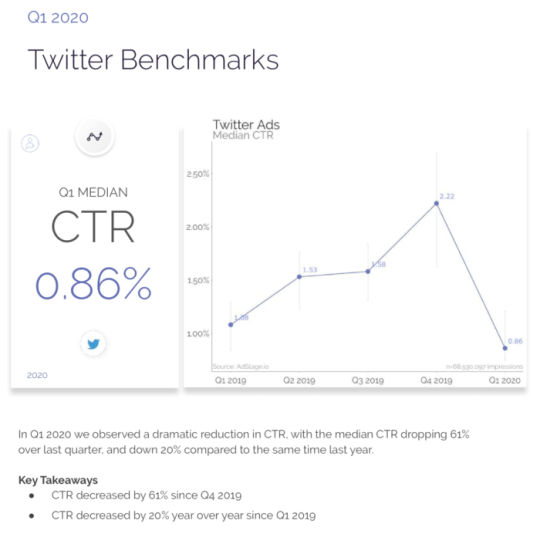
Understanding Click-Through Rates and Their Impact on Success
Defining CTR and its Importance in Online Marketing
CTR remains a pivotal metric, symbolizing the percentage of users who click on a specific link or advertisement, thereby directing traffic to a website. It's the heartbeat of online campaigns, reflecting their effectiveness.
Exploring the Average CTR Across Different Industries
Across diverse industries, CTRs fluctuate. Ranging from 1.91% in the dating niche to 6.05% in the advocacy sector, these numbers are the pulse points of industry-specific success.
Highlighting the Negative Consequences of Low CTRs
Low CTRs breed a multitude of issues. They signal disengagement, affect ad quality scores, and subsequently lead to reduced visibility and higher costs, spiraling into a cycle of diminishing returns.
The Rise of Banner Blindness: Why People Are Ignoring Your Ads
Explaining the Concept of Banner Blindness and Its Causes
Banner blindness embodies the innate human ability to ignore banner-like information due to overexposure or irrelevance. Users have developed a subconscious filter, rendering ads invisible.
Discussing the Impact of Ad Fatigue and Information Overload
The deluge of information bombarding users daily contributes to ad fatigue. When inundated with an overflow of ads, users become desensitized, further intensifying banner blindness.
Illustrating the Urgency of Adopting New Strategies
Amidst this crisis, the urgency to evolve strategies looms large. Remaining stagnant means falling into the void of unnoticed advertisements.
As the veil lifts on the CTR crisis, the next section delves into an innovative solution: the CTR Booster. Its unveiling promises a transformative shift in navigating the labyrinth of declining CTRs and banner blindness, marking a pivotal turning point in online marketing strategies.

A Glimpse into the Functionality of the CTR Booster
Brief Overview of the Tool's Capabilities
The CTR Booster stands tall as a comprehensive solution, armed with the prowess to amplify CTRs. Its multifaceted approach encompasses diverse functionalities tailored to bolster online campaigns.
Emphasizing its Ease of Use and Intuitive Interface
Navigating through complexities is a thing of the past. The CTR Booster boasts a user-friendly interface, ensuring seamless adoption and effortless utilization for marketers of varying expertise levels.
Highlighting its Compatibility with Various Platforms and Ad Formats
Versatility lies at the core of the CTR Booster. Whether it's Google Ads, social media platforms, or display networks, this tool seamlessly integrates across diverse advertising mediums, rendering it indispensable.
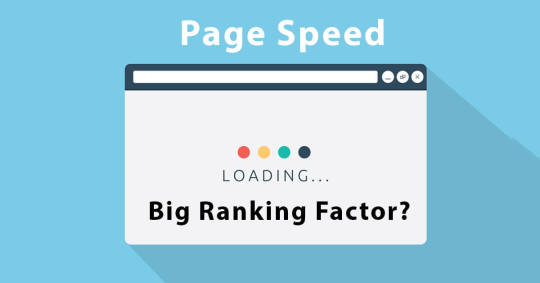
What Makes the CTR Booster Unique?
Differentiating the Tool from Other CTR Optimization Solutions
Amidst a sea of optimization tools, the CTR Booster stands out. Its innovative approach redefines CTR enhancement, surpassing conventional methods with a distinctive blend of features and functionalities.
Highlighting its Unique Features and Benefits
Tailored segmentation, dynamic ad personalization, and real-time analytics converge within the CTR Booster, offering a bouquet of benefits that transcends the ordinary, paving the way for unparalleled campaign success.
Showcasing its Ability to Target Specific User Segments
Precision is the hallmark of the CTR Booster. Its ability to target and engage specific user segments ensures a personalized approach that resonates with individual preferences.
As the curtains draw upon the revelation of the CTR Booster, the forthcoming section unveils the strategic roadmap to harness its potential - a step-by-step guide navigating through the intricacies of leveraging this powerful tool to skyrocket Click-Through Rates.
Boosting Your Click-Through Rates: A Practical Guide to Using the CTR Booster
Unleashing the true potential of the CTR Booster demands a strategic roadmap. This section is a comprehensive guide, dissecting each phase from setting up campaigns to harnessing the power of automation, all to skyrocket Click-Through Rates (CTRs) and rejuvenate flagging online campaigns.
Defining Your Target Audience and Campaign Goals
Precision begins with clarity. Pinpointing your target audience's demographics, behaviors, and preferences forms the cornerstone. Aligning these insights with campaign goals sets the stage for efficacy.
Selecting the Appropriate Ad Formats and Platforms
Diversity breeds success. Choosing the right ad formats and platforms that resonate with your audience ensures optimal visibility and engagement.
Designing Compelling Ad Creatives with High Visual Appeal
Crafting compelling visuals intertwined with persuasive messaging is an art. Captivate your audience with visually striking and emotionally resonant ad creatives that stand out amidst the clutter.

Implementing the CTR Booster: Optimizing Your Ads for Maximum Impact
Utilizing the Tool's Features to Personalize Ads for Individual Users
Personalization is the key to engagement. Leverage the CTR Booster's capabilities to tailor ads dynamically, catering to individual preferences and behaviors.
A/B Testing Different Ad Variations to Identify the Best Performing Options
Refinement breeds success. Experimentation through A/B testing unveils insights, guiding you toward the most effective ad variations that wield the highest CTRs.
Employing Data Analytics to Track and Refine Your Campaign Performance
Insights drive optimization. Analyze and interpret data gleaned from the campaign to refine strategies, iterating toward a refined campaign structure.
Scaling Up Your Success: Leveraging the Power of Automation
Automating Ad Optimization Based on Real-Time Data Insights
Efficiency meets efficacy. Harness real-time data to automate ad optimization, ensuring ongoing enhancements and adaptations based on user behavior.
Scheduling Campaigns and Setting Budgets for Efficient Management
Strategic management is pivotal. Set clear schedules and budgets, optimizing resource allocation for maximum impact.
Monitoring Campaign Performance and Making Adjustments as Needed
Agility breeds success. Constant vigilance and adaptability are crucial. Monitor performance metrics and swiftly pivot strategies based on insights gathered.
As the strategic roadmap to leveraging the CTR Booster concludes, the subsequent section peels back the curtains on real-world success stories - compelling Case Studies that elucidate the transformative prowess of this remarkable tool.
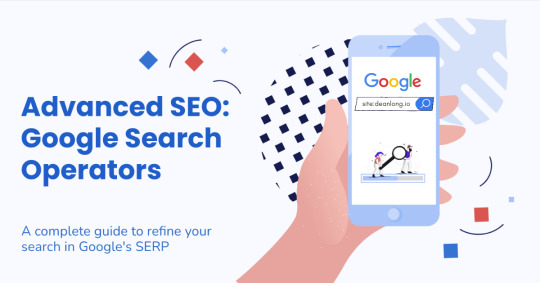
CTR Booster in Action: Witnessing the Transformative Power of the Tool
Embarking on the journey of the CTR Booster reveals the transformative prowess it wields, catalyzing remarkable success stories across varied industries. This section delves into compelling Case Studies, shedding light on real-world instances where the CTR Booster served as a beacon of change.
Case Study 1: Doubling Click-Through Rates for an E-commerce Brand
Brief Description of the Brand and its Initial CTR Challenges
An e-commerce giant faced stagnation amidst plummeting CTRs, signaling a perilous decline in online visibility and sales.
Illustrating How the CTR Booster Helped Them Achieve Significant Results
Adopting the CTR Booster proved a turning point. Dynamic ad personalization and targeted segmentation catapulted their CTRs, doubling user engagement.
Providing Quantifiable Data and Positive Testimonials
Quantifiable evidence speaks volumes. Witnessing CTRs surge from 2.5% to an astounding 5.3%, coupled with resounding endorsements, validated the tool's efficacy.
Case Study 2: Increasing Lead Generation by 50% for a SaaS Company
Highlighting the Unique Goals and Challenges Faced by the Company
A SaaS enterprise grappled with stagnant lead generation, hindering business expansion and market penetration.
Demonstrating How the CTR Booster Contributed to Exceeding Their Objectives
Integrating the CTR Booster was a game-changer. Laser-focused ad targeting and iterative A/B testing resulted in a remarkable 50% surge in lead generation.
Sharing Valuable Insights and Lessons Learned
Lessons gleaned pave the path for others. Analyzing user behaviors and the impact of personalized ads amplified not just leads but also invaluable insights.
Witnessing these success stories exemplifies the might of the CTR Booster, transforming bleak CTR landscapes into thriving ecosystems. As these case studies unveil the tool's transformative capabilities, the subsequent section beckons toward seizing the opportunity before it's too late.
The Advantages of Early Adoption
Gaining a Competitive Edge Over Other Businesses
Early adopters secure the vanguard position, soaring ahead in the digital landscape, reaping benefits while competitors play catch-up.
Maximizing the Impact of the Tool Before Potential Changes
Staying ahead in the digital race demands seizing opportunities before they fade. The CTR Booster promises a paradigm shift, best experienced before the winds of change alter its dynamics.
Securing Exclusive Early Adopter Bonuses and Discounts
A limited-time offer beckons, adorned with bonuses and discounts exclusive to early adopters. It's not just an investment; it's a strategic advantage.
Limited Availability: Don't Miss This Opportunity
Emphasizing the Limited-Time Offer and Scarcity of the Tool
Scarcity breeds urgency. The CTR Booster is a rare gem, available for a fleeting moment, presenting an opportunity that may not knock twice.
Creating a Sense of Urgency and Encouraging Immediate Action
Delay begets regrets. Act swiftly to seize the moment, transform your campaigns, and chart a new trajectory toward enhanced CTR and online success.
Providing Clear Instructions on How to Access the CTR Booster
Clarity streamlines action. Instructions lay the path toward accessing the tool, ensuring a seamless transition into a new era of digital marketing prowess.
As we bid adieu to this journey through the intricacies of CTR optimization and the revelatory CTR Booster, it's pivotal to reflect on the holistic narrative this series of articles has unveiled.

Conclusion: A Recap of the CTR Booster Journey
From the awakening of the looming CTR Crisis and the menace of Banner Blindness to the unveiling of a clandestine powerhouse - the CTR Booster, every facet illuminated the imperative need for evolution in digital marketing strategies.
The journey continued, delving into the tool's functionalities, a step-by-step guide on leveraging its prowess, and culminated with real-world instances of its transformative capabilities showcased through compelling Case Studies.
This narrative crescendos into an urging call to action - the limited-time offer on the CTR Booster. The opportunity it presents, the competitive edge it secures, and the transformations it catalyzes stand as testaments to its unparalleled potential.
So, the question lingers: will you seize this moment and elevate your digital campaigns to unprecedented heights?

Buy CTR Booster today and steer your campaigns toward a trajectory of triumph!
1 note
·
View note
Text
Best Resources
It presents a categorized collection of top tools and services across various domains, each hyperlinked for convenience. The list includes valuable resources such as AI sales assistants, business intelligence tools, cloud GPU services, email outreach platforms, proxy providers, and even niche tools like CTR manipulation software and component libraries like shadcnui. This curated compilation is designed to save time, boost productivity, and provide quick access to the most recommended tools in tech and digital marketing.
Elsewhere on the net:
https://www.minds.com/mdsbest/
https://hashnode.com/@mdsbest
https://www.bitsdujour.com/profiles/jrUJjf
1 note
·
View note
Text
Algorithm-Proof: Staying Ahead in the SEO Game
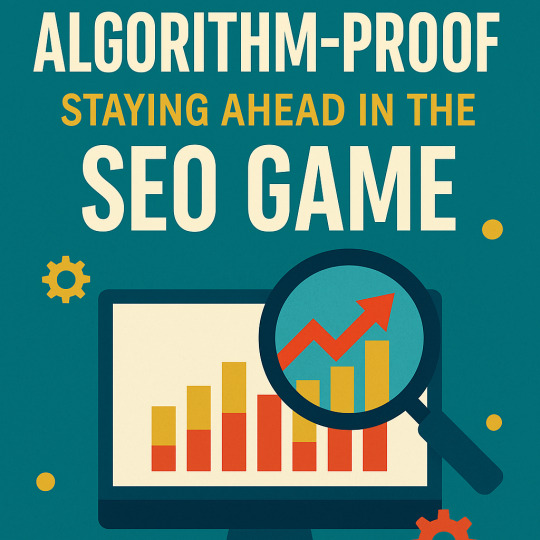
In an ever-changing online landscape, partnering with a reliable Digital Marketing Company in Chandigarh is more important than ever—especially if you want your business to stay visible no matter how often Google changes the rules. SEO isn’t a “set it and forget it” tactic anymore. Today, it's a dynamic, ever-evolving strategy that must adapt to new algorithm updates, shifting user behaviors, and search engine priorities.
This guide will help you understand what makes an SEO strategy algorithm-proof and how to build a foundation that won’t crumble every time Google rolls out a new core update.
Understanding the Algorithm Evolution
Google makes thousands of changes to its algorithm each year—some minor, others capable of shaking the SERPs like an earthquake. From Panda penalizing thin content to Penguin devaluing shady link schemes, the SEO landscape has matured rapidly. More recent updates like Helpful Content, BERT, and SGE (Search Generative Experience) are geared toward understanding search intent and rewarding websites that provide real value.
What’s clear is that Google is prioritizing people-first content over manipulation. It’s not just about keywords anymore—it’s about trust, structure, speed, and usability.
Core Pillars of Algorithm-Proof SEO
To future-proof your rankings, your SEO strategy should focus on the following four areas:
1. Content That Earns Its Rank
Google wants helpful, unique, and engaging content that demonstrates E-E-A-T (Experience, Expertise, Authoritativeness, Trustworthiness). Instead of chasing keywords, build topical authority by covering your niche comprehensively and semantically. That means focusing on real problems, solutions, and insights your audience cares about.
2. A Bulletproof Technical Foundation
Technical SEO is the silent engine behind every high-ranking website. Your site must be mobile-first, fast-loading, and structured for easy crawling. Use schema markup, optimize internal linking, and fix broken URLs. Remember: if Google can’t index your site efficiently, it won’t rank it—no matter how good your content is.
3. Backlinks That Build Authority – Not Risk
Links still matter, but quality always trumps quantity. Avoid spammy directories or PBNs and focus on earning backlinks through genuine value. Digital PR campaigns, thought leadership content, and guest posting on reputable sites are all white-hat methods that build authority—and survive algorithm updates.
4. User Experience & Engagement
Google tracks user behavior to determine whether your site is truly valuable. High bounce rates, low dwell time, and poor CTRs can be silent ranking killers. Make your site intuitive, engaging, and responsive. Good UX leads to higher retention—and better rankings.
Common SEO Mistakes That Get Penalized
Here’s what to avoid if you don’t want to vanish from page one overnight:
Keyword stuffing and over-optimization
Low-quality AI-generated content without human oversight
Duplicate content across service pages or blog posts
Toxic backlinks from irrelevant or low-authority sources
A professional Digital Marketing Company in Chandigarh knows how to sidestep these landmines while building a clean, future-proof SEO profile for your business.
Future-Proofing SEO in 2024 and Beyond
Looking ahead, SEO will continue to evolve alongside advancements in AI and search behavior. Here’s how to stay ahead:
Optimize for Search Generative Experience (SGE)
Create content that answers questions likely to appear in featured snippets
Use multimedia (videos, infographics) to keep users engaged
Strengthen your branded search presence and online reputation
It’s not about predicting Google’s next move—it’s about building a foundation so strong, you’re ready for whatever comes.
Tools & Practices to Monitor Algorithm Updates
Staying ahead also means staying informed. Use these tools:
Google Search Console for visibility and indexing issues
Semrush / Ahrefs for backlink analysis and keyword tracking
Google’s Search Central Blog for official update announcements
Regular audits and content refresh cycles to stay relevant and competitive
Clean Fuel, Clear Intentions
SEO success doesn’t come from shortcuts. It comes from strategy, consistency, and partnering with experts who know how to evolve with the algorithms—not chase them. At SE Rank Pro, your trusted Digital Marketing Company in Chandigarh, we specialize in building SEO strategies that don’t just rank—but endure.
Hungry for more insights beyond the algorithm? Don’t miss our next blog in the series Digital Deep Dive: Unlocking the Full Funnel Strategy where we explore how SEO, content, paid ads, and CRO work together to drive conversions across every stage of the customer journey. It’s the strategy upgrade your digital marketing truly needs.
0 notes
Text
How Data Science is Transforming the Creator Economy & Influencer Marketing

The rise of the creator economy has changed the way individuals monetize their passions, thanks to social media platforms like YouTube, Instagram, TikTok, and Twitch. Content creators and influencers now have the power to build personal brands and generate revenue in ways never before possible. At the heart of this evolution is data science, a driving force that helps influencers and brands make strategic decisions based on audience insights, engagement patterns, and content performance.
What is the Creator Economy and Influencer Marketing?
The creator economy includes bloggers, social media influencers, video content creators, and digital entrepreneurs who generate income from online platforms. Influencer marketing, a vital part of this ecosystem, involves brands partnering with influencers to promote products and services authentically. With over 50 million content creators globally and a projected market value exceeding $24 billion by 2025, leveraging data science is key to maximizing success in this fast-growing industry.
How Data Science is Shaping the Creator Economy
1. Gaining Deep Audience Insights
Understanding audience preferences is crucial for content creators. Data science enables influencers to analyze demographics, engagement trends, and user behavior to create content that truly connects with their followers.
Example: YouTube’s recommendation algorithm uses machine learning to analyze watch history, likes, and shares to deliver personalized content suggestions.
2. Optimizing Content Strategy with AI & Analytics
Data-driven insights help influencers refine their content for better performance. Key metrics include:
Engagement rates (likes, shares, and comments)
Audience retention and watch time
Click-through rates (CTR) on sponsored links
Hashtag and keyword analysis
Using AI-powered analytics, creators can tweak their content approach to improve reach and visibility.
3. Enhancing Monetization and Revenue Growth
Creators make money through brand collaborations, ad revenue, and merchandise sales. Data science helps maximize earnings by:
Predicting demand for sponsored content
Analyzing ad revenue potential based on audience activity
Setting optimal pricing for brand deals
Platforms like Instagram and TikTok use machine learning to assess an influencer’s true value beyond follower count, focusing on real engagement.
4. Fraud Detection for Authentic Influencer Marketing
Fake engagement and bot-driven followers have long been challenges in influencer marketing. AI-driven tools help brands:
Identify fake follower spikes
Detect engagement manipulation
Verify influencer credibility before collaborations
Platforms like HypeAuditor and Social Blade analyze influencer data to ensure brands partner with genuine and effective content creators.
5. AI-Powered Influencer-Brand Matching
Traditional influencer marketing required brands to manually research creators, but today, AI-driven platforms use machine learning to match brands with the right influencers based on:
Audience relevance and demographics
Engagement authenticity
Predicted campaign performance
Tools such as Upfluence, Traackr, and Influencity help streamline influencer discovery, ensuring brands connect with the best creators for their campaigns.
6. Sentiment Analysis for Consumer Behaviour Insights
Sentiment analysis powered by AI enables brands and influencers to track audience reactions to content. This allows:
Brands to measure the impact of influencer campaigns
Influencers to adjust messaging based on audience sentiment trends
Predicting audience preferences helps creators refine their content strategies, leading to better engagement and trust.
7. AI-Enhanced Video & Image Recognition for Better Engagement
Machine learning algorithms analyze video and image trends to improve content performance. Social media platforms like TikTok leverage AI to:
Identify high-performing video elements
Recommend trending music and visual styles
Optimize descriptions and captions for discoverability
With these insights, influencers can create content more likely to go viral.
The Role of Machine Learning Education in the Creator Economy
For professionals interested in using data science in influencer marketing, learning machine learning and AI is essential. The Boston Institute of Analytics (BIA) offers a premier Machine Learning Course in Kolkata, equipping students with the necessary skills to harness data science in digital marketing and social media analytics.
Key Features of the Course:
Hands-on training in Python, R, and TensorFlow
Real-world projects related to influencer marketing analytics
Deep learning, natural language processing (NLP), and sentiment analysis
Globally recognized certification with career support
The Future of Data Science in Influencer Marketing
With AI and data science constantly advancing, their role in the creator economy will only grow. Emerging trends include:
AI-generated content: Tools like ChatGPT and DALL·E assist influencers in creating content at scale.
Predictive analytics in influencer marketing: AI will forecast campaign success before brands invest in influencers.
Augmented Reality (AR) and Virtual Reality (VR) marketing: AI-driven AR/VR experiences will transform how brands collaborate with creators.
Final Thoughts
The creator economy thrives on data-driven decisions, and data science is the key to optimizing content, boosting engagement, and ensuring campaign authenticity. Whether it's personalized content recommendations, influencer fraud detection, or AI-driven brand partnerships, data science is making influencer marketing more effective and profitable.
For those looking to dive deeper into this field, enrolling in the Data Science Program provides a practical, industry-focused approach to mastering AI in digital marketing. As the creator economy continues to expand, professionals who understand data-driven marketing will be at the forefront of this revolution.
#best data science institute#data science course#data science training#ai training program#online data science course#Machine Learning Course in Kolkata
0 notes
Text
Manipulating Click-Through-Rate (CTR) for Better Google Rankings: A Strategic Guide
In the competitive world of digital marketing, improving your Google rankings is crucial. One innovative, albeit controversial, method to achieve this is through the manipulation of the Click-Through-Rate (CTR). This technique can enhance your website's relevance in Google's eyes without changing a single line of code or spending money on advertising. Here, we delve into the details of how this works, the techniques involved, and the potential risks.
Understanding CTR Manipulation
CTR manipulation involves increasing the number of clicks on your website's link in the search engine results pages (SERPs). Google considers a higher CTR as a signal that your website is more relevant and valuable to users, thereby improving your ranking.
Techniques for CTR Manipulation
Simulating Traffic: Using specialized software, you can simulate real user traffic to your website. This software uses 4G proxies and local proxies to mimic genuine visits. By appearing as legitimate traffic, these tools can effectively boost your site's CTR.
Strategic Use of Proxies: The software employs 4G proxies and local proxies to make the traffic look as authentic as possible. This means the simulated clicks come from different geographical locations, making it difficult for search engines to detect the manipulation.
Risks Involved
While CTR manipulation can significantly boost your rankings, it's not without risks. One major concern is negative SEO, where competitors could use similar tactics to harm your site. This could involve generating high bounce rates, where users quickly leave your site after clicking the link, signaling to Google that your content is not relevant or engaging.
Ethical Considerations and Future Implications
The ethics of CTR manipulation are highly debatable. This practice can lead to an uneven playing field, favoring those who can afford sophisticated manipulation tools. Moreover, if Google detects this kind of activity, it might lead to penalties, including lower rankings or even blacklisting. The increased use of such tactics could prompt Google to implement stricter algorithms to detect and penalize artificial traffic manipulation.
Conclusion
Manipulating CTR is a powerful yet risky strategy that can influence your Google rankings. While it offers a shortcut to better visibility, it also raises ethical questions and potential penalties. As the digital landscape evolves, so will the strategies and countermeasures surrounding SEO. The choice to employ such tactics ultimately depends on your risk tolerance and commitment to ethical practices.
Are you ready to harness this controversial power, or will you choose to play it safe in the ever-changing world of SEO? The decision is yours.
Article by Christopher Hüneke, expert in AI SEO and advertising psychology from Mannheim. Learn more about his work and insights on his website: chriseo.de
0 notes
Text
8 Best Apps for Shopify: 2024 Full List
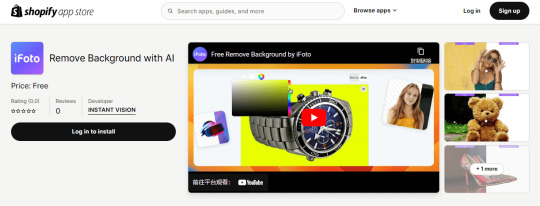
Shopify is one of the world's largest eCommerce operating platforms, on which merchants and run their stores and boost sales. To stand out from fierce competition, you definitely need to optimize your store or product performances and make sure to deliver the accurate advantages that your products can bring to your customers. Therefore, this ultimate review has gathered up all practical and helpful Shopify apps that can cover the most product management and store enhancement, in order to help you boost Shopify sales growth fast. Now, scroll down and check them to pick up your required apps based on your marketing demands!
Shortlist for 8 Best Shopify Apps in 2024
Before heading down to the detailed reviews, you can first walk through the shortlist of the 8 best Shopify apps in different categories and select those you actually need to dive in: - iFoto Photo Editor - best image editing platform for e-commerce - TinyING - efficient online image compressor for boosting SEO-optimized content to increase store rankings - Shopify email - help you efficiently do email marketing for your Shopify store - HubSpot CRM - powerful CRM for tracking, managing, and nurturing leads as well as your customers - Loox - help highlight your best product reviews to boost customer interest and improve sales conversion rate - Rewind Backups - used for safeguarding store’s data to prevent malicious attacks from unknown hackers - Growave - boost repeat purchases and enhance customer retention on your products to increase sales - PageFly Landing Page Builder - make it easier to do A/B test by building high-converting landing pages simply by dragging and dropping elements to edit without hassle In the following, let’s move to the details of these 10 best Shopify apps of 2024 to see how they help boost your sales.
1. iFoto Photo Editor
Verdict: Best AI-powered photo editor to create high-quality images for e-commerces in the most efficient way Shopify rating: 5.0 Free plan: Available Get iFoto Photo Editor
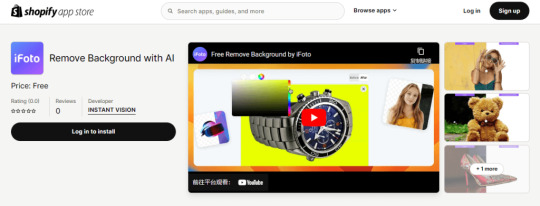
iFofo Photo Editor is a professional image editor, which empowers advanced AI techniques to improve image-resolving efficiency and maintain high resolutions to generate great outputs for both business and individual purposes. It provides multiple practical functions such as background remover, photo enhancer, image cleanup, color changer, and so on, which are suitable for enhancing product images to post on Shopify store. With iFofo Photo Editor, you can effortlessly update product information pages to boost customer engagement, improve CTR and get higher rankings in Shopify without hassle. Despite Shopify image editing, iFofo Photo Editor is equipped with a web-based platform and also both iOS/Android applications to provide you a convenient image editing experience, making itself suitable for every life scenario. iFoto Photo Editor is highly ranked as the best AI-powered image editing tools today, enjoying great reputation and also a large amount of loyal users from around the globe. Highlights of iFoto Photo Editor - Advanced AI techniques to guarantee efficient image resolving performance; - Appropriate functions tailored for e-commerce; - Retain great resolutions to ensure high-quality image outputs; - Effectively help you improve CTR and customer engagement.
2. TinyING
Verdict: Efficient image compressor to enhance image sizes with good quality retained to better boost SEO-optimized content. Shopify rating: 5.0 Free plan: Available Get TinyING
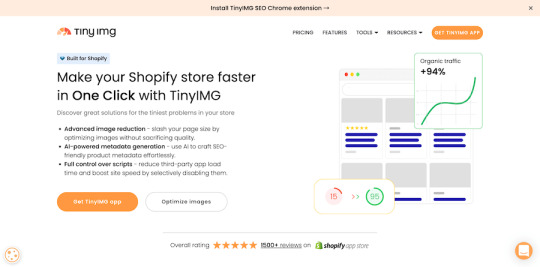
Well-known as a popular Shopify app for image optimization, TinyIMG is a popular selection among Shopify merchants in order to improve the website speed and enhanced SEO optimization that every store needs. TinyIMG enables easy manipulation, to Shopify store optimization accessible, affordable, and effortless, which helps you to save much effort and time but improve store performance to bring customers a nice browsing experience. TinyIMG is also equipped with a comprehensive knowledge base guiding every user to master its functions with ease. Even you are a new Shopify user, you won’t take a steep learning curve to get started with this Shopify app. Highlights of TinyIMG - Easy functions to enhance Shopify store speed to boost higher rankings; - Offer SEO optimization solutions to get impressions in Google Search; - Low learning curve even for green hands to get started.
3. Shopify Email
Verdict: Offer a hassle-free and automatic way to do email marketing for boosting Shopify product sales. Shopify rating: 4.3 Free plan: Available Get Shopify Email
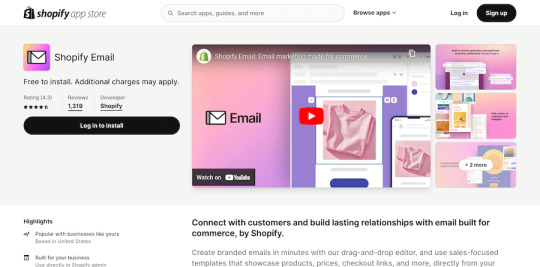
Want to boost your Shopify products to higher views and attracts more sales? Email marketing is a way to help. When ecommerce emails have an average open rate of 15.68%, Shopify Email can definitely be the way to help you surpass this number and get a higher figure. This Shopify app is specially designed to streamline email marketing for Shopify merchants, with functions to easily create email lists, campaigns, and organize them to send to customers. To improve the efficiency, Shopify Email also provides some preset templates for immediate apply, making your email marketing job an effortless and effective task in order to bring up product impressions and even sales. Highlights of Shopify Email - Automatic and smart email sending system equipped; - Preset templates to create an email efficiently; - Directly link to Shopify products and offers analysis data to evaluate your work.
4. HubSpot CRM
Verdict: Apply the powerful CRM system to manage and track your customers without hassle Shopify rating: 5 Free plan: Available Get HubSpot CRM
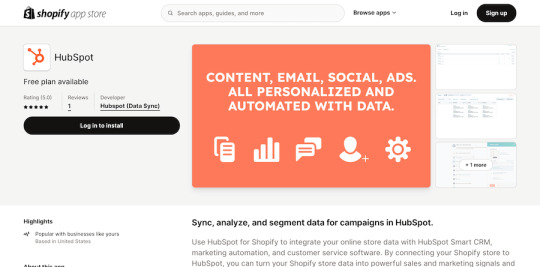
HubSpot CRM applies powerful data integration technique to sync your Shopify store data with HubSpot, letting you to personalize and automate your marketing campaigns, and get data analyzed to consider market strategies to achieve success. It easily helps you learn about specific customer segments and their preferences as well as behaviors. With such data, you get opportunities to engagement them again and improve the store sales effectively. Highlights of HubSpot CRM - Rich features to connect and manage customers efficiently; - Visualize your sales pipeline, team performance, and productivity metrics through customizable reports and dashboards; - Equipped with mobile app to access CRM data on iOS/Android to monitor store performance from time to time.
5. Loox
Verdict: Apply for boosting brands with social proofs like product reviews, attractive images or video referrals efficiently. Shopify rating: 4.9 Free plan: Available (only for 14 days) Get Loox

Loox is a powerful and visually stunning social proof solution designed to help Shopify merchants to boost brand awareness, in order to attract more customers and improve sales. With its automated review collection system, Loox effortlessly gathers product reviews, photos, and videos from customers, providing social proof that resonates with potential buyers. What sets Loox apart is its ability to display these reviews in fully customizable widgets that easily integrate with your online store, without compromising site performance. These widgets can be tailored to match your brand's aesthetic, ensuring a consistent and professional look across your digital presence. Highlights of Loox - Designed with customized emails and forms to collect product reviews from customers; - Generate discounts for customers willing to add a photo or video to reviews; - More widgets to embed in Shopify store to invite for reviews; - Sync reviews to more platforms such as Shop App, Meta Shops, and Google Shopping & Search.
6. Rewind Backups
Verdict: Protect Shopify store’s data to prevent malicious attacks from unknown hackers Shopify rating: 4.9 Free plan: Available (only for 7 days) Get Rewind Backups
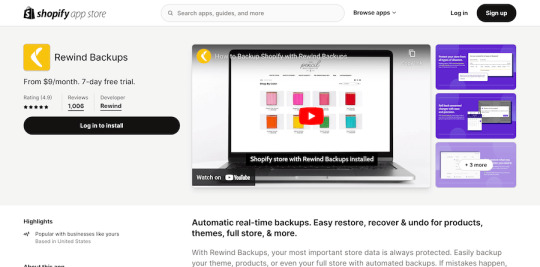
Rewind Backups provides trustworthy service to safeguard your critical store data, ensuring your online business is always protected. With automated backup capabilities, you can effortlessly secure your theme, product catalog, or even your entire store with just a few clicks. In the event of accidental changes, data loss, or other unforeseen issues, Rewind Backups can help you quickly restore your information and swiftly resume normal operations, minimizing downtime and lost sales. Moreover, Rewind Backups’s Protection Suite is equipped with bulk product change alerts, notifying you instantly of any significant modifications to your product catalog, ensuring you remain in control and can address potential issues promptly. To safely protect the security of your Shopify store data, Rewind Backups can be a reliable Shopify app you shall not miss. Highlights of Rewind Backups - Automatic backup to save copies of important Shopify Store data for you; - One click to restore data efficiently; - No storage limit to keep all your store backups; - Instant monitor feature to let you know every change to your store in time.
7. Growave
Verdict: Mainly help merchants with needs to increase repeat purchases from old customers to increase sales Shopify rating: 4.8 Free plan: Available (only for 14 days) Get Growave
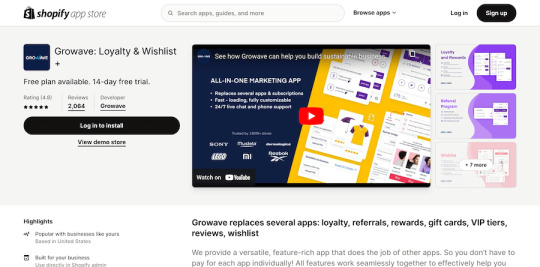
Growave is another Shopify app offers powerful all-in-one solution to build up product combination and create streamline the cross-sailing together to boost old users’ intention. It is equipped with a suite of tools to tailor your online marketing strategies with all your Shopify products. There are also preset templates available to select for applying directly, so that you can easily take control of your products and enhance sales performance more conveniently. Growave is also equipped with a centralized dashboard, letting you easily manage and configure the app's features without the need for coding expertise, bringing every merchant an easy access to streamline your operations and avoid the costs associated with subscribing to individual apps separately. Highlights of Growave - Easily combine multiple functions into one platform for boosting sales; - The ability to extensively customize the online store's appearance and user experience across different themes; - A unified dashboard to manage and configure all the app's features from one place; - Low learning curve and is easy for beginners to get started.
8. PageFly Landing Page Builder
Verdict: Easily complement A/B tests by building high-converting landing pages simply by dragging and dropping elements to edit without hassle Shopify rating: 4.9 Free plan: Available (only for 14 days) Get PageFly Landing Page Builder

Catering to users of all skill levels, PageFly is a reliable Shopify app suitable for merchants just start with Shopify platform but need to seek a user-friendly introduction to website design, rapidly growing merchants looking to scale, and doing more page testing to apply the webpages of good CTR. With its SEO-optimized architecture and intuitive interface, PageFly provides a platform that harmoniously blends creativity and business objectives. PageFly's seamless design tools and flexible customization options ensure your ecommerce presence stands out from the competition while delivering an exceptional user experience that drives conversions and growth. With this app, you will find Shopify store design no longer a troublesome task, and even find ways to improve product sales greatly. Highlights of PageFly Landing Page Builder - Drop-and-drop feature to build up pages easily; - Rich templates to apply for quickly page designing and save time; - Built-in analytics feature available; - SEO tools available to help optimize pages for higher rankings; - Customized code editing to further enhance page appearance professionally; - Collaboration features available. Final Words There top 8 Shopify apps are very basic and essential ones that will be installed by a majority of Shopify merchants, in order to better manage their store performance, improve rankings, and further boost sales. Based on your requirements, you can choose the ones to install and start enhancing your Shopify store in no time! Read the full article
0 notes
Text
. Exploring the Future Trends in the Use of Compressed Links
Exploring the Future Trends in the Use of Compressed Links
As digital communication continues to evolve, the use of compressed links, also known as URL shorteners, is expected to undergo significant changes and advancements. Several emerging trends are shaping the future landscape of compressed links, offering new opportunities and challenges for users and organizations. Here, we explore some of these future trends:
Enhanced Security Features: With the growing concerns about cybersecurity and online privacy, future compressed link services are likely to incorporate enhanced security features. This may include built-in malware detection, link validation mechanisms, and encryption protocols to ensure the integrity and safety of shortened URLs.
Integration with Blockchain Technology: The adoption of blockchain technology in various industries is expected to impact the use of compressed links as well. Blockchain-based URL shortening services can offer immutable records of link ownership, increased transparency, and enhanced trustworthiness, addressing concerns about link manipulation and redirection.
Customization and Branding Options: As businesses continue to prioritize brand identity and user engagement, future compressed link services may offer more customization and branding options. This could include the ability to customize shortened URLs with company logos, colors, and slogans, providing a cohesive brand experience across digital channels.
Intelligent Link Management: Future compressed link services are likely to incorporate artificial intelligence (AI) and machine learning (ML) algorithms for intelligent link management. These technologies can analyze user behavior, predict link performance, and optimize link redirection based on contextual factors such as time, location, and device.
Seamless Cross-Platform Integration: With the proliferation of multiple digital platforms and devices, future compressed link services will focus on providing seamless cross-platform integration. This includes ensuring compatibility with various operating systems, web browsers, and social media platforms to deliver consistent user experiences across devices.
Data-driven Analytics and Insights: Future compressed link services will offer advanced analytics and insights to help users track and measure the performance of their shortened URLs. This may include real-time analytics dashboards, click-through rate (CTR) optimization tools, and audience segmentation capabilities for targeted marketing campaigns.
Regulatory Compliance and Transparency: With increased scrutiny from regulatory authorities and privacy advocates, future compressed link services will prioritize regulatory compliance and transparency. This includes adhering to data protection laws, providing clear terms of service, and offering transparency reports on link usage and data collection practices.
Sustainable and Green Initiatives: As environmental sustainability becomes a global priority, future compressed link services may incorporate green initiatives to reduce their carbon footprint. This could include energy-efficient data center operations, carbon offset programs, and eco-friendly infrastructure designs to minimize environmental impact.
In conclusion, the future trends in the use of compressed links are poised to revolutionize digital communication and marketing strategies. By embracing security enhancements, customization options, intelligent link management, cross-platform integration, data-driven analytics, regulatory compliance, and sustainability initiatives, compressed link services can adapt to evolving user needs and technological advancements while ensuring a safe, seamless, and sustainable online experience.
source:
The Best 10 URL Shorteners in 2024: A Complete Guide for Marketers
0 notes
Text
The Important Role of Chiropractic Care in Overall Health
The field of chiropractic care has rapidly evolved over the past few years, serving as a beacon of non-invasive relief for countless individuals dealing with various physical ailments. Chiropractors deal with a broad range of health and wellness issues beyond just neck and back pain - from athlete injury recovery to boosting overall immune response. Being a chiropractor near me not only enables greater accessibility but also ushers waning discomfort into an arena of comfort.
Non-Invasive Path towards Pain Relief
Conventional medical interventions for muscle or joint distress often involve medications, injections, or surgery. Chiropractic care offers an alternative avenue for relief using hands-on spinal manipulation and other non-invasive treatment techniques. This aligns the body's musculoskeletal structure, particularly the spine, improving its flexibility while stimulating health-enhancing nerve impulses.
Not Just About Back Pain
A critical aspect people overlook when searching for a 'chiropractor near me' is that chiropractic services aren't confined to addressing spinal issues alone. It extends to headache management, improving sleep quality, increasing energy levels, breathing problems, ear infections, and even boosting immunity by restoring nervous system integrity – essential for an optimized immune response.
Sports Injury Management Through Chiropractic Care
Athletes often push their bodies to extreme limits resulting in overuse injuries or other physical trauma including torn muscles and ligaments. Many professional athletic teams include chiropractors owing to their ability to speed up recovery time and enhance athletic performance through therapies targeting alignment correction and increase mobility.
Personalized Treatment Approach
Every individual is unique – so should be the treatment approach. Skilled chiropractors do not follow a one-size-fits-all philosophy when it comes to treating patients but instead craft personalized adjustment plans according to each person’s needs — whether it's intense lower back pain, whiplash from a car accident, or chronic headaches.
Safe and Effective
The safety profile of chiropractic care is impeccable. Complications or adverse reactions to treatment are extremely rare. In fact, patients often report feeling immediate relief following chiropractic treatment. This non-pharmaceutical therapeutic approach is proving itself as an effective tool to alleviate both acute and chronic conditions by treating the root cause rather than suppressing symptoms.
Improve Quality of Life
Far beyond mere symptom management, regular chiropractic care promotes improved health and vitality leading to better overall quality of life. Regular adjustments help maintain bodily function and mobility – invaluable for staying active and living life fully at every age.
Chiropractors fill a critical role in today's healthcare system. Being available as a 'chiropractor near me' bridges the gap for patients looking for holistic, non-invasive treatments designed to not merely suppress symptoms but reach the underlying cause and treat it head-on – providing much-needed relief and aiding long-term wellness objectives. From laid-back office workers to strenuous athletes - people from all walks of life can benefit from this specialized area of healthcare dedicated to improving physical function and enhancing overall well-being.
Gordon Street Chiropractic Ctr
403 Arkell Road, Unit 6 , Guelph, Ontario, N1L 1E5
519-837-0411
#chiropractor clinic#chiropractor near me#guelph chiropractor#chiropractic care guelph#guelph chiropractic
1 note
·
View note
Text
The Future Of Google AdSense
There are many ideas springing up concerning what AdSense will look like in the future and how the system will change as opposed to what it is now. Firstly, it’s clear that targeting algorithms will become even better and more powerful then they are now. This has clearly been seen with the Google search engine itself over the last few years and it should be of no surprise as this happens with AdSense. Advertisers will appear in more appropriate results and those advertisers who manipulate their content to allow high paying keywords to appear may struggle to do this unless it is actually appropriate to their content. Another thing which is bound to happen is more protection for AdWords advertisers concerning click fraud. Google acknowledges this to be a very key issue that it needs to address as quickly as possible and there’s no doubt it will happen as fast as possible. At the moment those who have high levels of traffic, can easily disguise IP addresses and increase CTR Google is always keen on improving its products and this has been seen before in AdSense. The search engine company has introduced site-targeted AdSense CPM, “smart pricing” and domain blocking and there will probably be improvements that have already been added by other similar sites. One such example is the option for the advertiser to have more control over where the content is being displayed. This could mean blocking your site from displaying on several addresses that host AdSense banners. Another idea that has been advanced is that Google will integrate AdSense in other forms of media like newspapers or television and so on. While this might seem to be more on the science-fiction side of the facts there’s no indication that this might not happen. Google have access to an international array of over 150,000 advertisers of whom may choose to penetrate offline markets in different countries. With Google’s strong network of advertisers, they may choose to appoint or allow offline distributors to create a format for Adwords advertising in content, in search and now offline. More options could be implemented for AdSense publishers, allowing them to specify keywords of their own. While Google has been reluctant of this there’s no indication that this will not happen in the future. Also, a lot of people are demanding a clear specification of the pricing policy of AdSense. Google has given no indication of why this isn’t public information but at this moment it seems highly unlikely that such information will ever be present on Google AdSense. Another feature that could find itself into AdSense would be letting website publishers see which links are generating clicks on their website and based on what keywords they arrive there. This could end up being a major issue that could threaten the entire system as it could perhaps encourage more adsense only websites as profits become more transparent. A lot of people may make AdSense-only sites, designed just for making profits through AdSense. While this is already happening today, it might be foolish of Google to put such tools in the hands of its publishers. However, one thing that could happen is a way for users to fix their issues with low AdSense generated income on their site. This could be done through an on-line wizard or something similar that would make suggestions to website owners based on their contents. But the major buzzword of the day is RSS. The possibility of sending targeted ads directly to users without requiring any navigation on their behalf is becoming a reality with RSS. And there are clear signs that Google isn’t going to let such an opportunity pass by. This is what “interactive television” and similar items have been trying to do for quite some time now. But the Internet would be a much better medium for this, because there are no mediums quite as interactive as the Internet. But in the end, this is mostly speculation and we are bound to have Google surprising us with new features we would have never thought of.
4 notes
·
View notes
Video
youtube
CTR Manipulation
Everyone that gets into the SEO game wants to rank number one in Google & Youtube. The truth is, few ever reach page one, and those that do, spend alot of time and money reaching that coveted spot. But what if you didn't have to spend 6 months to a year and loads of money to reach page 1 rankings? What if you could use a simple tool to do ALL of your hard work for you on autopilot and cut your ranking time down to less than a month.. weeks or days even. You'd do that right? Of course you would!
That is where CTR Manipulation comes in, using the Viper, you can spend less than a minute setting up campaigns and then the Viper does all of the heavy lifting for you and ranks your properties on page 1 of Google & Youtube. Just like King Midas was able to turn everything he touched in Gold, when you use the Viper for CTR, you will rank everything you ever wanted, turning your SEO work into PURE GOLD! #CTRmanipulation #CTR #CTRViper
2 notes
·
View notes
Text
The Future Of Google Adsense
There are many ideas springing up concerning what AdSense will look like in the future and how the system will change as opposed to what it is now. Firstly, it’s clear that targeting algorithms will become even better and more powerful then they are now. This has clearly been seen with the Google search engine itself over the last few years and it should be of no surprise as this happens with AdSense. Advertisers will appear in more appropriate results and those advertisers who manipulate their content to allow high paying keywords to appear may struggle to do this unless it is actually appropriate to their content. Another thing which is bound to happen is more protection for AdWords advertisers concerning click fraud. Google acknowledges this to be a very key issue that it needs to address as quickly as possible and there’s no doubt it will happen as fast as possible. At the moment those who have high levels of traffic, can easily disguise IP addresses and increase CTR ( Click Through Rate). Google is always keen on improving its products and this has been seen before in AdSense. The search engine company has introduced site-targeted AdSense CPM, “smart pricing” and domain blocking and there will probably be improvements that have already been added by other similar sites. One such example is the option for the advertiser to have more control over where the content is being displayed. This could mean blocking your site from displaying on several addresses that host AdSense banners. Another idea that has been advanced is that Google will integrate AdSense in other forms of media like newspapers or television and so on. While this might seem to be more on the science-fiction side of the facts there’s no indication that this might not happen. Google have access to an international array of over 150,000 advertisers of whom may choose to penetrate offline markets in different countries. With Google’s strong network of advertisers, they may choose to appoint or allow offline distributors to create a format for Adwords advertising in content, in search and now offline. More options could be implemented for AdSense publishers, allowing them to specify keywords of their own. While Google has been reluctant of this there’s no indication that this will not happen in the future. Also, a lot of people are demanding a clear specification of the pricing policy of AdSense. Google has given no indication of why this isn’t public information but at this moment it seems highly unlikely that such information will ever be present on Google AdSense. Another feature that could find itself into AdSense would be letting website publishers see which links are generating clicks on their website and based on what keywords they arrive there. This could end up being a major issue that could threaten the entire system as it could perhaps encourage more adsense only websites as profits become more transparent. A lot of people may make AdSense-only sites, designed just for making profits through AdSense. While this is already happening today, it might be foolish of Google to put such tools in the hands of its publishers. However, one thing that could happen is a way for users to fix their issues with low AdSense generated income on their site. This could be done through an on-line wizard or something similar that would make suggestions to website owners based on their contents. But the major buzzword of the day is RSS. The possibility of sending targeted ads directly to users without requiring any navigation on their behalf is becoming a reality with RSS. And there are clear signs that Google isn’t going to let such an opportunity pass by. This is what “interactive television” and similar items have been trying to do for quite some time now. But the Internet would be a much better medium for this, because there are no mediums quite as interactive as the Internet. But in the end, this is mostly speculation and we are bound to have Google surprising us with new features we would have never thought of. Word count: 687
1 note
·
View note
Text
Danny and Criticism: An Essay/Rant?
Since I’m on desktop I can finally put this under a read more thank god and also jesus
it’s very long…and I didn’t edit it so some of it might not make any sense because I type too fast for my thoughts sometimes
I’ve been thinking about Danny, big surprise, and the way he executes criticism. Since I started watching Eddy, I’ve noticed that Danny rarely has an overt/expose criticism when he is talking about other creators, unlike Eddy and Drew.
Eddy and Drew usually criticize creators that are actively doing something ethically wrong. Their content is more essay-like and research-based than Danny’s; So, Eddy and Drew’s commentary is more satirical while Danny’s is more purely comedic.
The thing is, Danny has been overtly critical in past videos and, for a while, it bothered me that he has backed away from it. It still does kind of bother me, to be honest, because he’s an intelligent dude who has some hot takes on important topics. I think now more than ever he could execute harsher criticism and keep it entertaining; “Bag Tho” is an excellent example of that and so was his criticism on the pedophile theory for Yummy on his second channel.
But it doesn’t bother me as much as it used to because I realized something the last time I was focusing on this issue; I’ve learned more from Danny about criticism and comedy than I have from Eddy and Drew. He has influenced the way I approach a text in more ways than any other comedian has (except maybe Bo Burnham…they’re tied). This doesn’t mean that Eddy and Drew don’t have influence over my critical thinking skills, but, for me, their content is the result of practiced critique; I don’t learn how to approach a text, but I learn about the text; it’s like discussing a subject with my peers instead of learning it from a professor; in college, both of those practices helped me learn and exercise my critical thinking so, in no way do I think this makes any of them superior to the others.
Danny’s main goal is to make people laugh; he’s said it in his main videos; he’s said it on podcasts; and he’s said it on his second channel, too. In his interview with Anthony Padilla he said that he treats his videos like stand-up. (I’d fucking love to see his live stand up. I’d give every cent in my savings account to see that.) Danny is a comedian, first and foremost, and YouTube is his platform. You could tell from his vine career just how hard he was trying to pursue comedy as a career, to be noticed as a comedian. He comes by it honestly and has said some of his vines weren’t funny and were just attempts at going viral. The dude is worried about his brand to a fault, imo, but he’s got talent and confidence to back it up. So, of course his content is going to reflect that more than Eddy’s or Drew’s.
Eddy and Drew are also comedians who want to make people laugh but Eddy has said recently on the Gus & Eddy podcast that he wants his commentary to be about people who are actually doing something wrong instead of clowning on cringe content like Danny does. (Yes, he specifically listed Danny as an example. At first I was on the defense and felt like Eddy was kinda shaming Danny for not pursuing a more “noble” style of commentary. But, after calming down and listening to the episode again, I realized he was just saying that their content does different things which I totally agree with…still don’t agree that Danny “just clowns” on people but more on that later.) Eddy still wants his content to be funny, and still has commentary videos that don’t have an overt critical agenda, but you can tell that satirical comedy is a main motivator for him.
I feel like Drew is right in between Danny and Eddy on the criticism scale. He has his more comedic videos and he has his more serious ones. But, in my opinion, his serious videos are just a little bit better. It’s honestly hard to tell what the driving motivation behind his commentary is because he hasn’t fully spoken up about it, as far as I know, but I would say he leans more toward satirical comedy.
Since I started studying comedy in college I’ve had a sort of thesis building in my head: humor is a comfortable way to approach uncomfortable things; it’s a way to battle cognitive dissonance. Laughing at something wrong is an effective way to sneakily change someone’s mind; ridicule and shame are powerful tools; that’s why I love satire. (I will also add since humor is amoral it can also be used negatively, but that does not mean we should jump to the conclusion that all ridicule/satire is naturally wrong.)
So what does that have to do with Danny’s style of commentary? Sure, he’s a comedian trying to make people laugh and sure he avoids addressing more serious topics, but he does provide important criticism even if it’s not in the same area as Drew or Eddy. In that interview with Anthony Padilla, Danny said he wants to prove that content on YouTube can be as good as traditional media. His goal isn’t to expose people for doing bad things, though he is still doing that but not as critically as the other two, but to show his audience how to be critical of popular media; a main criticism in his videos overall is about low-effort and formulaic content because that’s something he very clearly cares about. His goal isn’t to call out people for being toxic; it’s to call out their content for not being as good or well-though-out as it could be. The problem with low-effort content, especially from bigger creators, is that it’s there to make money and nothing else; it’s content that has no substance; it’s manipulative. Even content that has a high-production value needs to have substance, creativity, and originality.
Danny pointed out in his “how i make a video” video that he doesn’t want to make fun people who are just inexperienced; he wants to make fun of people who know exactly what they’re doing and still don’t put in the effort to make their content good.
Another one of his critiques, usually with Badads, is about dishonesty; his badads videos are mostly goofy but they all have the same criticism about their manipulative nature. In fact, his whole experiment with badads was about pointing out the manipulative tactics and valuing honesty (even if his honest ad didn’t get a higher CTR.)
I think his critiques are capable of teaching people to be more critical of the media they consume without making them feel like they’re wrong for enjoying it.
Another thing I think Danny approaches well is misogyny. (Again, his badads videos are prime examples because so many ads sexualize women.) But the way he does it IS IMPORTANT and, in my opinion, a better method than other commentary channels. Returning to my theory about ridicule being an effective tool to sneakily change someone’s perspective, Danny isn’t overt about his criticisms toward misogyny. He doesn’t say shit like “sexism is bad and women are great and I worship women and blah blah blah” but he does ridicule misogyny often. His methods aren’t preachy or forceful but he does normalize the ridicule and shaming of misogynistic behavior. By laughing at the behavior and treating it like it’s outlandish and ridiculous he normalizes respect for women. This is why you will never see me saying some shit like “Danny drinks his respect women juice ohmygod he’s my heeerrrooo” because it’s not heroic behavior and he doesn’t fucking treat it that way. If we over-worship this stuff we set the bar hella low. It should not be seen as the highest possible standard for men; it should be seen as the normal standard for men. I definitely praise him for this approach, but not for just…acting like a dude should act.
All that being said
Do I think his general audience walks away from his content with these criticisms in mind? From my experience in the fandom, and from just scrolling through the comments in his videos, I don’t think it effects everyone like it effects me. This is mostly fine because I don’t think his full intent is to get people to learn how to think critically about the content they consume; I firmly believe him when he says he mostly wants to make people laugh. But I’m hopeful that they are more critical of things even if they aren’t conscious of it.
The biggest I problem I have with Danny is that he avoids confrontation with his fans. As I said before, he’s a little too worried about his brand. I don’t think he’s as bad about it as some of his contemporaries, who have co-dependent relationships with their fans (which I distrust because I find that manipulative and dishonest); I hate when he feels like he has to do damage control with his stans on twitter (the Reddit AMA thing) but I don’t think he panders either.
BUT what bothers me The Most is that he doesn’t make the point to call out fans who harass the creators he covers. He’s done it once or twice but I feel like all commentary YouTubers should make an effort to specify the difference between comedy/commentary/criticism and bullying/harassment. Most people swarm to commentary content because they want the drama, because they love to hate and, sadly, they think that harassment is justified even if a creator isn’t doing something horribly wrong. Hell, even if they’re doing something horribly wrong, they’re still getting undeserved attention and harassment. doesn’t. communicate. criticism.
This is a reason why I’d wish he’d be more overt with this criticism because it doesn’t always translate…especially for his younger fans.
What’s the point of all this? I guess I just wanted to get my inner-monologue about this out in the fresh air but I also wanted to point out that Danny’s content is still critical and it’s been effectively critical for me. He makes me appreciate comedy and criticism more but I still wish he’d be more overt about some things.
10 notes
·
View notes
Text
Big Data is not so big: Data Science for small- and medium-sized enterprises
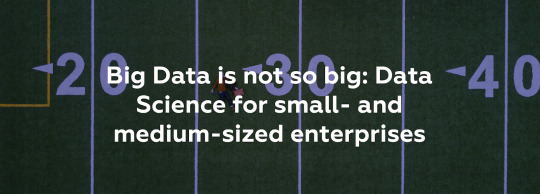
New basis for any business
Current advances in technology are in many ways fueled by the growing flow of data coming from multiple sources and analyzed to create competitive advantage. Both individual users and businesses are switching to a digital system¹, which in turn generates pools of information. In their turn, organizations share data with other companies, giving rise to digital ecosystems that begin to blur traditional industry borders. As the amount of data available grows, the size, diversity, and applications of it are accelerating at a near-exponential rate, and businesses are discovering that traditional data management systems and strategies do not have the means to support the demands of the new data-driven world.
If several years ago data analytics was used mostly in finance, sales and marketing (such as customer targeting) and risk analysis, today analytics are everywhere²: HR, manufacturing, customer service, security, crime prevention and much more. As Ashish Thusoo, co-founder and CEO, Qubole, pointed out, “A new generation of cloud-native, self-service platforms have become essential to the success of data programs, especially as companies look to expand their operations with new AI, machine learning and analytics initiatives.”
While, according to a report by Qubole³, only 9% of businesses already support self-service analytics, 61 percent express plans for moving to a self-service analytics model. With different forms of data collected and connected to aid businesses in drawing analogies between datasets, coming up with actionable insights and improving decision-making, Big Data and Data Science have moved to the foreground of the industrial and commercial sector.
However, the volume of data may not be the decisive factor for optimizing business operations. Small- and medium-sized businesses need to understand the benefits that intelligent data analytics can bring and the opportunities for data collection and management.
Big Data and its relation to Data Science
Big Data is a term covering large collections of heterogeneous data whose size or type is beyond the ability of traditional databases to capture, manage, and process. Big Data encompasses all types of data, namely:
structured (such as RDBMS, OLTP, transaction data, etc.)
semi-structured (XML files, system logs, text files and such), and
unstructured information (emails, blogs, digital images, sensor data, web pages and many other types).
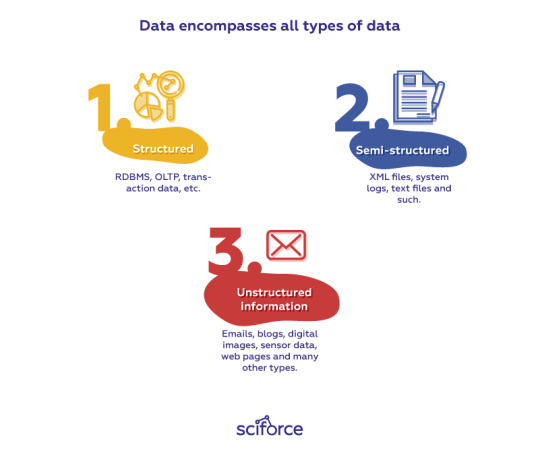
The sources of big amounts of data are multiple and varying depending on the industry or the business sector: data may come from sensors, devices, video/audio, networks, log files, transactional applications, web, and social media, with much of it generated in real time and on a very large scale.
The heterogeneity of data and inclusion of unstructured information in the data set require specialized data modeling techniques, tools, and systems to extract insights and information. Analyzing large amounts of data allows businesses to make decisions based on the data that was previously inaccessible or unusable with the help of advanced analytics techniques such as text analytics, machine learning, predictive analytics, data mining, statistics, and natural language processing. In this sense, the term Big Data refers to the whole range of the processes that information goes through, encompassing data gathering, data analysis, and data implementation.
Such scientific approach which applies mathematical and statistical ideas and computer tools for processing big data is called Data Science. It is a specialized field that combines intersecting areas such as statistics, mathematics, intelligent data capture techniques, data cleansing, mining and programming to prepare and align big data for intelligent analysis to extract insights and information.
Hence, the field of Data Science has evolved from Big Data, or Big Data and Data Science are inseparable.
The big Vs of big data:
The concept of Big Data as is known today was rolled running in the early 2000s when industry analyst Doug Laney articulated the now-mainstream definition of Big Data as the three Vs⁴:
Volume: with data coming from sensors, business transactions, social media and machines, there is a problem of the amount of data required for analytics is considered to be solved.
Velocity, or the pace and regularity at which data flows in. It is critical, that the flow of data is massive and continuous, and the data could be obtained in real time or with milliseconds to seconds delay.
Variety: for the data to be representative, it should come from various sources and in many types and formats.
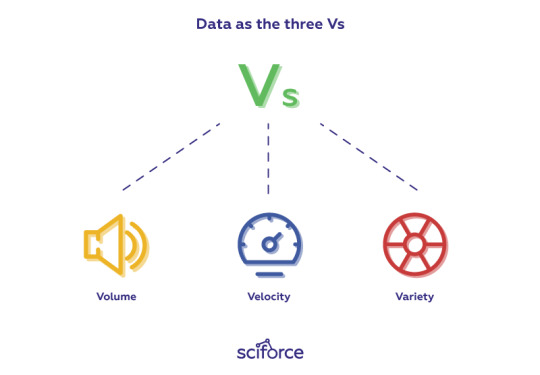
The initial concept has evolved to capture other factors that impact the effectiveness of manipulations with data, such as:
Variability: in addition to the increasing velocities and varieties of data, data flows can be highly inconsistent with periodic daily, seasonal or event-triggered peaks that need to be taken into account in analytics.
Veracity: in most general terms, data veracity is the degree of accuracy or truthfulness of a data set in terms of the source, the type, and processing techniques.
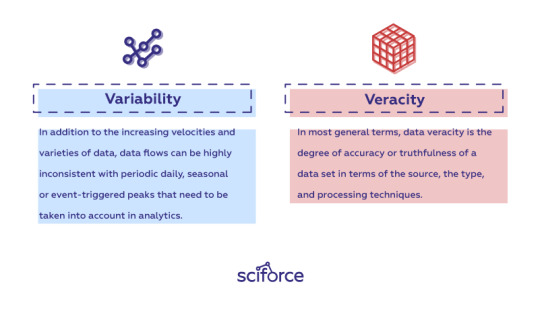
As technology evolves, more aspects of data come into the foreground giving rise to new big Vs.
Challenges posed by Big Data to businesses
Even though the amount of data collected is sufficient for analytics, it cannot guarantee that the analytical findings will be useful for the company. The problems that companies face in their quest for effective analytics can be triangulated into the problems related to the overabundance of versatile data, the lack of tools and the talent shortage.
On the data processing and machine learning side, analyzing extremely large data sets (40%), ensuring adequate staffing and resources (38%) and integrating new data into existing pipelines (38%) were called the primary obstacles to implementing projects.
Oversized pool of data
The research firm Gartner forecasts that in 2019 we will see 14.2 billion connected things in use⁵ resulting in a never-ending stream of information that can become a challenge for drawing meaningful insights.
Lack of adequate tools
To successfully compete in today’s marketplace, small businesses need the tools larger companies use. In its 2018 Big Data Trends and Challenges report⁶ Oubole, the data activation company, stated that 75 percent of respondents also reported that a sizeable gap exists between the potential value of the data available to them, and dedicated tools and talent dedicated to delivering it.
Changes in labor market
The spreading of new technologies will shift the core skills required to perform a job. The Future of Jobs Report⁷ estimates that by 2022, no less than 54% of employees will require re- and upskilling. According to Qubole, 83 percent of companies say it is difficult to find data professionals with the right skills and experience.
For business these challenges mean that they need to choose between retraining their existing personnel, hiring new talent with required skills and invest into developing their own tools for data collection and processing, purchasing third-party analytical products or finding subcontractors for doing Big Data Analytics.
Applications of Big Data
Big Data affects organizations across practically every industry and of any size ranging from governments and bank institutions to retailers.
Manufacturing
Armed with the power of Big Data, industries can turn to predictive manufacturing that can improve quality and output and minimize waste and downtime. Data Science and Big Data Analytics can track process and product defects, plan supply chains, forecast output, increase energy consumption as well as support mass-customization of manufacturing.
Retail
The retail industry largely depends on the customer relationship building. Retailers need their customers, the most effective way to handle transactions, and the most strategic way to bring back lapsed business — and Big Data provides the best solution for this. Originated from the financial sector, the use of large amounts of data for customer profiling, expenditures prediction and risk management become the essential Data Science tasks in the retail industry.
Marketing
The digital marketing spectrum is probably the biggest application of Data Science and machine learning. Ranging from the display banners on websites to the digital bill boards at the airports — almost all digital advertisement is decided by Data Science algorithms. Based on the user’s past behavior, digital advertisement ensures a higher CTR than traditional advertisement targeting the audience in a timely and more demand-based manner. Another facet of digital marketing is recommender systems, or suggestions about similar products used by businesses to promote their products and services in accordance with the user’s interest and relevance of information.

Logistics
Remaining a new application for Data Science, logistics benefits from its insights to improve the operational efficiency. Data science is used to determine the best routes to ship, the best suited time to deliver, the best mode of transport ensuring cost efficiency. Furthermore, the data that logistic companies generate using the GPS installed on their vehicles, in its turn creates new possibilities to explore using Data Science.
Media & Entertainment
The current consumers’ search patterns and the requirement of accessing content anywhere, any time, on any device lead to emerging new business models in media and entertainment. Big Data provides actionable points of information about millions of individuals predicting what the audience wants, scheduling optimization, increasing acquisition and retention as well as content monetization and new product development.
Education
In education, data-driven insight can impact school systems, students and curriculums by identifying at-risk students, implementing a better system for evaluation and supporting of teachers and principals.
Health Care
Big Data Analytics is known as a critical factor to improve healthcare by providing personalized medicine and prescriptive analytics. Researchers mine data to see what treatments are effective for particular conditions, identify patterns related to drug side effects, strategize diagnostics and plan for stocking serums and vaccines.
How it works
Step 1. Discover the data sources
The first step for processing data is discovering the sources that might be useful for your business. The sources for Big Data generally fall into one of three categories:
Streaming data — the data that reaches your IT systems from a web of connected devices, often part of the IoT.
Social media data — the data on social interactions that might be used for marketing, sales and support functions.
Publicly available sources — massive amounts of data are available through open data sources like the US government’s data.gov, the CIA World Factbook or the European Union Open Data Portal.
Step 2. Harness data
Harnessing information is the next step that requires choosing strategies for storing and managing the data.
Data storage and management: at present, there are low-cost options for storing data in clouds that can be used by small businesses.

Amount of data to analyze: while some organizations don’t exclude any data from their analyses, relying on grid computing or in-memory analytics, others try to determine upfront which data is relevant to spare machine resources.
Potential of insights: Generally, the more knowledge you have, the more confident you are in making business decisions. However, not to be overwhelmed, it is critical to select only the insights relevant to the specific business or market.
Step 3. Choose the technology
The final step in making Big Data work for your business is to research the technologies that help you make the most of Big Data Analytics. Nowadays there is a variety of ready-made solutions for small-businesses, such as SAS, ClearStory Data, or Kissmetrics, to name a few. Another option to tackle your specific needs is to develop — or subcontract — your own solution. In the choice it is useful to consider:
Cheap, abundant storage;
Fast processors;
Affordable open source, distributed big data platforms, such as Hadoop;
Parallel processing, clustering, MPP, virtualization, large grid environments, high connectivity, high throughputs and other techniques to optimize analytics;
Cloud computing and other flexible resource allocation solutions.
Conclusion
In the past, Big Data was used primarily by big businesses, since they were the only ones who could afford the technology and channels used to collect and analyze the information. However, today, even smaller-scale businesses can take advantage of Big Data and Data Science by choosing the relevant information they might use for their specific needs, and selecting tools or teams that can accessed remotely and on demand.
Critically, the importance of Big Data doesn’t revolve around the amount of collected data, but around the specific insights it may bring to a specific business or an industry. The combination of relevant Big Data with high-powered and targeted analytics can serve the following tasks:
Determining causes of failures and defects in near-real time;
Generating advertisements or promotion campaigns based on the customer’s buying habits;
Recalculating risk portfolios in minutes;
Prediction of stocks and sales;
Detecting and prevention of fraudulent behavior and much more.
References
https://www.forbes.com/sites/joshbersin/2016/12/11/how-everything-is-becoming-digital-and-why-businesses-must-adapt-now/
https://www.ibm.com/analytics/nl/nl/?cm_mmc=OSocial_Blog-_-IBM+Analytics_Data+Science-_-IBN_NL-_-NL+BLOG+ANALYTICS&cm_mmca1=000017WL&cm_mmca2=10003914&
https://insidebigdata.com/white-paper/report-depth-look-big-data-trends-challenges
https://blogs.gartner.com/doug-laney/files/2012/01/ad949-3D-Data-Management-Controlling-Data-Volume-Velocity-and-Variety.pdf
https://www.gartner.com/en/newsroom/press-releases/2018-11-07-gartner-identifies-top-10-strategic-iot-technologies-and-trends
https://insidebigdata.com/white-paper/report-depth-look-big-data-trends-challenges
http://www3.weforum.org/docs/WEF_Future_of_Jobs_2018.pdf
2 notes
·
View notes
Text
Future Of Data Science
What is data science?

Data science is a field that uses scientific method, process, algorithms and system to extract knowledge from data in various forms, structural, unstructured it is similar to data mining.
Data science is a concept to unify statistic, data analysis, machine learning and their related method in order to understand actual phenomena with data .It employs theory and techniques drawn from many field within the context of mathematics, statistics, information science and computer science
How to learn data science
Data science is a very practical field, and so it’s so important to apply theoretical knowledge that you have gathered. For example, when you learn starts, don’t just sit and read about it .see how it can be done with a programming language such as python, which a very popular language for beginners, find a data set and apply these concept on the data. Including other language like
1 linear algebra and calculus –for these refer to the book called advanced engineering mathematics by kreyszig. The various topics that you need to brush up your understanding in are hyper parameters, regularization function, cluster analyses are few topics under this domain and which is important for machine learning
2 vector calculus
3 Statistics—go on learning statistics on various sites like udacity, khan academy, courser. They provide detailed overview on this topic which is a vital topic under data science.
4 programming language---The most widely preferred open source statistical tools are ‘R’ and ‘Python’.
FOR R--start learning libraries like dplyr, tidyr, data table for data manipulation and ggplot2 for visualization which has the same syntax as R.in fact the visualization in ggplot2 is way better than that of matplotib
Go to kaggle and download data sets so that you can practice the concept that you have studied and build project and put up on your Git profile
How To Prepare for the Future of Data Science
There are many ways companies can and should prepare for the future of data science. These include creating a culture for using machine learning models and their output, standardize and digitize processes, experimenting with a cloud infrastructure solution, have an agile approach to data science projects and creating dedicated data science units. Being able to execute on some of these points will increase the likelihood of succeeding in a highly digitized world.
A Data Science Unit
In my previous role I was working as a data scientist for an insurance company. One of the smart moves they made was to create an analytics unit, which worked across company verticals.
This made it easier for us to reuse our skills and models on a variety of data sets. It was also a signal to the rest of the company that we had a focus on data science and that this was a prioritized issue. If a company has a certain size, creating a dedicated data science unit is definitely the right move to make.
Standardization
Standardization of processes is also important. This will make it easier to digitize and perhaps automate these processes in the future. Automation is a key driver for growth, making it much easier to scale. An added bonus is that the data collected from automated processes is usually a lot less messy and less error prone than data collected from manual processes. Since an important enabler of data science models is access to good data, this will help make the models better.
Adoption of Data Science
There should also be a culture in the company for adopting the use of machine learning algorithms and using their output in business decisions. This is of course often easier said than done since many employees might fear that the algorithms are making them obsolete.
It is therefore critical that there be a strong focus on how employees can use their existing skill set alongside algorithms to make more high-level and tactical business decisions, as this combination of human and machine is likely to be the future of work in many occupations. It will probably be more than a few years before the machine learning algorithms are able to navigate alone and make superhuman decisions in an open world setting, meaning mass unemployment due to the rise of the machines is not a likely scenario in the near future.
Always Experiment
With new data being generated from IoT sources, it is important to explore new data sets and see how they can be used to augment your existing models. There is a constant flow of new data waiting to be discovered.
Perhaps including two new variables from an obscure data set into your model will increase the precision of the leads generating model by 5% — and perhaps not. The point is to always experiment and not be afraid to fail. Like all other scientific inquires, failed attempts abound, and the winners are those who keep on trying.
Create an environment that promotes experimentation and that tries to make incremental improvements to existing business processes. This will make it easier for data scientist to introduce new models and will also set the focus on the smaller improvements, which are a lot less risky than the larger grand visions. Remember, data science is still a lot like software development and the more complex the project becomes the more likely it is to fail.
Try building an app that your customers or suppliers can use to interact with your services. This will make it easier to gather relevant data. Create incentives to promote usage of the app which will increase the amount of data being generated. It is also imperative that the UX of the app be appealing and promotes use.
We might need to venture outside of our comfort zones to take on the opportunities and challenges that this digital gold brings. As the amount of data continues to grow, machine learning algorithms get smarter and our computational abilities improve, we will need to adapt. Hopefully, by creating a strong environment for using data science your company will be better prepared for what the future will bring.
Applications / Uses of Data Science
Using data science, companies have become intelligent enough to push & sell products as per customer’s purchasing power & interest. Here’s how they are ruling our hearts and minds:
Internet Search
When we speak of search, we think ‘Google’. Right? But there are many other search engines like Yahoo, Bing, Ask, AOL, Duckduckgo etc. All these search engines (including Google) make use of data science algorithms to deliver the best result for our searched query in fraction of seconds. Considering the fact that, Google processes more than 20 petabytes of data every day. Had there been no data science, Google wouldn’t have been the ‘Google’ we know today.

Digital Advertisements (Targeted Advertising and re-targeting)
If you thought Search would have been the biggest application of data science and machine learning, here is a challenger – the entire digital marketing spectrum. Starting from the display banners on various websites to the digital bill boards at the airports – almost all of them are decided by using data science algorithms.
This is the reason why digital ads have been able to get a lot higher CTR than traditional advertisements. They can be targeted based on users past behavior.
Speech Recognition
Some of the best example of speech recognition products are Google Voice, Siri, Cortana etc. Using speech recognition feature, even if you are not in position to type a message, your life wouldn’t stop. Simply speak out the message and it will be converted to text. However, at times, you would realize, speech recognition doesn’t perform accurately.

Image Recognition
You upload your image with friends on Facebook and you start getting suggestions to tag your friends. This automatic tag suggestion feature uses face recognition algorithm. Similarly, while using whats app web, you scan a bar code in your web browser using your mobile phone. In addition, Google provides you the option to search for images by uploading them. It uses image recognition and provides related search results.

Gaming
EA Sports, Zynga, Sony, Nintendo, Activision-Blizzard have led gaming experience to the next level using data science. Games are now designed using machine learning algorithms which improve / upgrade themselves as the player moves up to a higher level. In motion gaming also, your opponent (computer) analyzes your previous moves and accordingly shapes up its game.

Fraud and Risk Detection
One of the first applications of data science originated from Finance discipline. Companies were fed up of bad debts and losses every year. However, they had a lot of data which use to get collected during the initial paper work while sanctioning loans. They decided to bring in data science practices in order to rescue them out of losses. Over the years, banking companies learned to divide and conquer data via customer profiling, past expenditures and other essential variables to analyze the probabilities of risk and default. Moreover, it also helped them to push their banking products based on customer’s purchasing power

Airline Route Planning
Airline Industry across the world is known to bear heavy losses. Except a few airline service providers, companies are struggling to maintain their occupancy ratio and operating profits. With high rise in air fuel prices and need to offer heavy discounts to customers has further made the situation worse. It wasn’t for long when airlines companies started using data science to identify the strategic areas of improvements. Now using data science, the airline companies can:
1. Predict flight delay
2. Decide which class of airplanes to buy
3. Whether to directly land at the destination, or take a halt in between (For example: A flight can have a direct route from New Delhi to New York. Alternatively, it can also choose to halt in any country.)
4. Effectively drive customer loyalty programs
Southwest Airlines, Alaska Airlines are among the top companies who’ve embraced data science to bring changes in their way of working
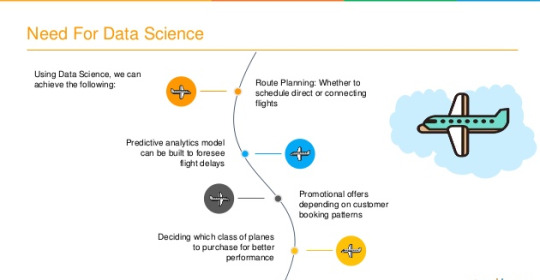
Coming Up In Future
Though, not much has been reveled about them except the prototypes, and neither I know when they would be available for a common man’s disposal. Hence, We need to wait and watch how far Google can become successful in their self driving cars project.
Self Driving Cars

1 note
·
View note